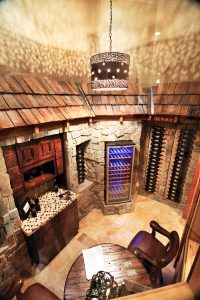Soundproofing Your Custom Home: A Guide to Comfort and Privacy
Aspen Homes | 4 Minutes

At Aspen Homes, we know that embarking on a new construction project to build your custom home is an exciting journey filled with possibilities. From choosing the perfect layout to selecting the finest finishes, every decision you make should contribute to creating a space that reflects your unique style and personality. In all the excitement of building your dream home, however, we strongly recommend that you don’t overlook the importance of soundproofing.
Imagine finally settling into your newly built home only to realize that intrusive noises from outside or from other rooms within the house disrupt the tranquility you envisioned. Outside noises can disturb your enjoyment of a quiet evening or even keep you awake. It might be the rumble of an airplane passing overhead, wildlife noises, a neighbor’s barking dog, or music from a party at a house down the road.
Inside the house, it might be someone blending a smoothie a little too early in the morning or your kids playing a raucous game while you’re trying to work. You may want to watch an action movie late at night or blast your sound system. Wouldn’t it be nice knowing you could turn up the volume without worrying about keeping your spouse up or disrupting your kids’ homework?
That is where soundproofing and sound-dampening come into play. Technically, soundproofing materials prevent the transfer of sound waves, while sound-dampening materials reduce the reflection or “bouncing” of those sound waves off surfaces. Depending upon your needs for a given situation, soundproofing and sound-dampening materials can create an effective sound barrier.
These materials offer a solution to maintain peace and privacy for everyone within your living spaces. Soundproofing is for more than just your home theater or home office. Soundproofing can enhance your home’s environment in every room by creating quiet zones or spaces, especially in open-plan designs where it may be difficult to “get away” from other activities going on in the house.
Built-in Soundproofing
The time to investigate your soundproofing options is before you build. Installing soundproofing during the construction phase offers numerous benefits that extend beyond mere noise reduction. By integrating soundproofing measures from the outset, you streamline the construction process and save on retrofitting costs.
One of the primary benefits of soundproofing during construction is efficiency. For one thing, several types of insulation are specifically designed to provide soundproofing benefits. By selecting the right insulation, you don’t have to double up on weather insulation and soundproofing panels; one product may be able to do both.
While many people think of insulation as primarily for external walls, using soundproofing insulation in your internal walls allows you to minimize sound transfer from one room to another. Even minor noises like running water in the sink, a toilet flushing, or a dishwasher or dryer running can be annoying when they disrupt an otherwise tranquil environment, particularly at night.
Installing soundproofing insulation may provide enough dampening for some rooms. Still, in rooms like a home theater or home office where you may be taking important calls or engaging in a video meeting, you will want to go even further.
In these rooms, you can dampen sound transfer using sonopanels. Different manufacturers make these types of panels, which are about the size and thickness of a sheet of drywall. Sonopanels are usually installed over insulation and beneath the drywall.
For the floor, you can enhance soundproofing by installing the right underlayment materials, such as double-layered subfloors with noise-canceling compounds and joist isolators. These help dampen sound transmission between upstairs and downstairs. In the ceiling, installing sound-rated insulation between the ceiling joists, as well as incorporating sound barriers and sound clips, will effectively minimize airborne and impact noises.
When soundproofing a room, you need to consider every part of the room. If you only soundproof 95% of the room, the remaining 5% where the sound transfers will end up defeating the whole purpose of the effort. You need to seal around every part of the room from which sound can transfer, including electrical outlets and light fixtures. You must also obtain soundproof doors and windows and ensure good seals around them.
Another part of the house that demands attention is the HVAC system. Unfortunately, vents and ductwork are notorious for carrying sound throughout a building, and some HVAC units can be noisy in themselves. However, there are ways to add sound-dampening foam and liners to your ductwork and vents to minimize the amount of noise that transfers through the house.
From Beginning to End, Every Detail Matters
By considering your soundproofing needs and wants before construction, you can tailor the right solution for every room in your house. Whether you anticipate high noise levels from a nearby road or desire enhanced privacy between rooms, designing a customized soundproofing plan allows for greater flexibility and optimization. From the floor to the walls and ceiling, each component can be engineered to achieve the desired level of sound isolation.
If you’re considering building a custom home in North Idaho and wish to incorporate soundproofing features into your design, please consult Aspen Homes. With our expertise in custom home construction and our commitment to quality craftsmanship, we can help you realize your vision of a peaceful and private sanctuary. Contact Aspen Homes today to discuss your project requirements and begin creating your dream home.



